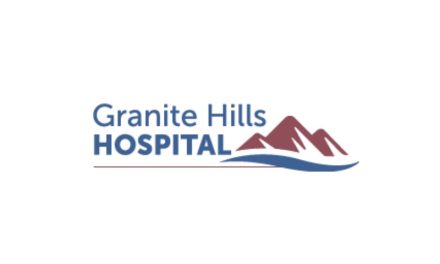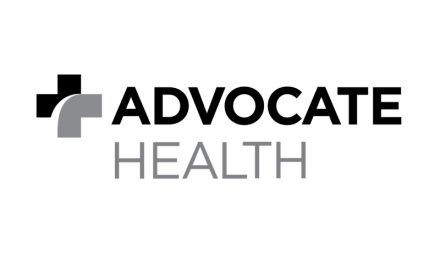
On the Record with the Palliative Care Network of Wisconsin Chair Dr. Tim Jessick and Vice Chair John Maycroft
The Palliative Care Network of Wisconsin recently reached 3,000 members. The organization, which aims to support those who provide specialized medical care for the sickest patients and advocate on their behalf, has only been around since 2015.
“Even though we love the fact we’re helping palliative care and hospice as specialities, I think our real promise has to do with overall patient care, patient-centered approaches to care and really training our other colleagues around us how to do what we do,” said Dr. Tim Jessick, who chairs the network.
Jessick and network vice chair John Maycroft recently updated Wisconsin Health News on the progress of the initiative. Edited excerpts are below.
WHN: The network launched in 2015. Can you give an update on where it now stands?
John Maycroft: We started out just knowing that by bringing people in palliative care together, we could make a difference. We didn’t know what that would look like that or how we would structure it. I think, in that time, we’ve found our stride. We provide education, we connect people across the islands. We don’t try to do it with a big budget or gigantic programs. We are connectors and that’s worked really well.
WHN: How do you serve as a connector?
JM: The main thing that brings people to PCNOW now is Fast Facts, this online educational tool.
Tim Jessick: Fast Facts is actually a product developed at the Medical College of Wisconsin, so it definitely has Wisconsin roots. It’s a resource for clinicians and non-clinicians for evidence-based, peer-reviewed information for everything from symptoms, symptom management, how to have a family meeting to how to treat hiccups. It’s been a very strong source of education for providers around Wisconsin, around the country and around the world.
JM: That’s something that attracts people to PCNOW in the first place. As folks from around Wisconsin, whether they’re physicians, nurses, social workers or what have you, see that there is a network, we get inquiries some times from people in far flung regions of Wisconsin asking for connections and we just introduce them to each other. That’s a lot of what we would do. Then they start talking, making connections and learning from each other. We have a mentoring program that helps connect people to each other more formally. Now, since we as an organization are well connected across palliative care, we’re able to work with groups like the Wisconsin Cancer Council and be a voice for palliative care and amplify the voices of people out in the field.
WHN: You have something of an international presence. How have you attracted members from around the world?
JM: We exist to service Wisconsin. But providing the resources that we provide and providing an accessible home for people learning more about palliative care, it seems that the demand for that was so strong that it’s attracted interest beyond Wisconsin.
TJ: That’s been the most amazing part. Wisconsin really has been at the forefront for a lot of this, whether it be Honoring Choices Wisconsin, Respecting Choices. And we’re seeing that now in the Palliative Care Network of Wisconsin. What worked really well for palliative, hospice and other providers in the state really works well and resonates with folks around the country and honestly around the world. As of the end of June, I think we’re at more than 3,000 members. I don’t have the actual count for outside Wisconsin or outside the United States. But that number keeps growing.
WHN: How does your organization fit into what’s going on nationwide?
TJ: It was interesting. At our national academy meeting, they asked me to present on our network, to share this information. I fully expected to see a bunch of other states with the same thing. One or two states are trying to do something, but not to the degree that our network has gone. It really surprised me but also made us really proud for what we’ve already accomplished.
JM: I hope they see how much power there is to be had when stakeholders and palliative care ban together. When you speak with one voice, you can advocate for yourself as a profession in the statewide health system, in your own place of employment. Having that group to help you along is just good for anyone.
TJ: What we’ve seen is that what started off as helping palliative folks getting the word out, now we’re finding out that because of that unified voice, because of the group that we have, now we’re having the Academy of Anesthesiology saying, “Hey, can we partner with you to provide information for our anesthesiologists nationwide?” As John mentioned, the Wisconsin Cancer Council said, “Hey can we work together to better care for our cancer patients?” And we had Sen. Tammy Baldwin, D-Wis., say “Hey, we’d like to support a palliative bill in Washington, can we work together on this and can you provide a quote for my support?” So it’s incredible how others are now reaching out to us to collaborate and work together. It ultimately helps the patients, families and the caregivers.
WHN: What other public policies are you pursuing?
JM: One effort that we can point to is that there’s new interest in creating a Wisconsin palliative care advisory committee at the state level. That would likely work with the Department of Health Services or the governor’s administration to be a committee for the state of Wisconsin. We’re hoping that a coalition to support the creation of that committee will come together and that we can be a voice on it.
WHN: What’s involved under the Baldwin bill?
TJ: It’s called the Palliative Care and Hospice Education and Training Act. This was a bill initially presented by Baldwin, but now several other senators, trying to provide funding to help fellowships for palliative medicine and provide money to train more of us because we’re about 4,000 to 8,000 palliative clinicians short right now. We’re very thankful that she wanted to do that from a federal level. But what really surprised me though was when a Wisconsin state representative contacted us and said, “Hey, Senator Baldwin’s bill might take a while, do you want to do something similar at the state level? I’d love to support this or represent this on the state level.” So we’ve been having ongoing discussions with that state representative’s group but also to start forming this advisory council, which we really think will help PCNOW to serve as a voice of palliative care from a state and from a governmental policy level and really more of an advisory role where we can suggest, “Boy, we really need to do more with advanced directive registries” or “We need to do something with surrogacy decision-making laws.” Things like that. So I think it’s a fantastic opportunity, not only for us but for the state to partner together.
WHN: What sort of changes have you seen in support of the care you’re providing? Have you noticed a change in how physicians are approaching this type of care in the last couple of years?
TJ: We’ve seen changes in a couple of different ways. Our initial hope, which was to provide resources for the palliative and hospice providers around the state, is happening. We’re getting requests and thank-yous from folks all the time saying, “Thank you for providing this PowerPoint presentation on pain. This is what we’re going to present to the hospital or this is what we’re going to present to the community.” So the resources we have available for free for all our members are being used regularly. So that the information about palliative and hospice is out there, not only for the community but the hospitals. But the bigger influence I think though is as we worked with system change, basically continuous quality improvement projects, we’re giving the tools to hospitals, clinics and systems to improve. So if they’re not having enough advanced care directives completed, we’re giving them step-by-step instructions on how to complete those directives. We’re getting good responses back from folks saying. “I have no idea how I’d start this quality improvement project but thanks to PCNOW and encouragement and a step-by-step approach, I was able to talk to my chief medical officer,” or “I was able to talk to my president to get those discussions going.” So from a practical perspective and hands-on pain and symptom management perspective, it’s making a difference. But also on a bigger scale, improving the overall care at hospitals and clinics. We’re starting to hear some of those results as well.
JM: I think we’ve seen big improvements in the public’s understanding of palliative care and what it is. It used to be associated almost exclusively with hospice when really it’s care for anyone with serious illness. So to recognize that palliative care is appropriate for more patients farther upstream, that it’s something that provides enormous benefit, I think there’s growing recognition of that all around.
WHN: What do you see as the future of the network?
JM: It’s been such a whirlwind and so explosive in the last two years, it’s hard to predict where we’ll be in another two. But I think we’d like to strengthen our connections in the Wisconsin healthcare community and build more of these partnerships. We’d like to be a resource for the media, for policymakers, for healthcare systems in understanding what palliative care is and what it can be. I think it would help to have ever-better policies and payment structures that support palliative care and team-based approaches. If we can just be part of this field as it continues to grow and represent well, that’d be a beautiful thing.





